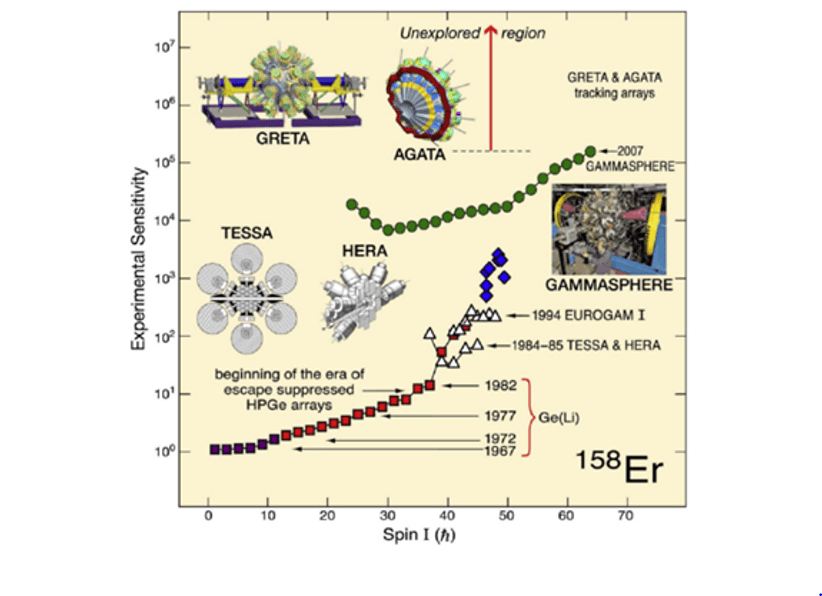AGATA: Nuclear structure advancement with fusion-evaporation reactions

A special topical issue of the European Journal of Physics, entitled “AGATA: Advancements in Science and Technology”, is due – with several contributions already available online, including contributions from the Liverpool Nuclear Physics Group.
The main topic involves the AGATA (Advanced Gamma Tracking Array) which is a highly sensitive gamma-ray spectrometer. This next-generation device has been slowly evolving over the last few years and is currently available in a 1π geometry before ultimately a 4π geometry is achieved in the coming years.
The figure shows the evolution of the sensitivity of various gamma-ray spectrometers over the years, as a function of the angular momentum attained. Currently it is possible to identify gamma rays with an intensity of 10-5 of the strongest transition (2+ → 0+ in an even-even nucleus). These weak gamma rays are seen at the highest values of angular momentum beyond 60ħ – the ultrahigh spin region. It is envisioned that the full AGATA configuration should increase the sensitivity by at least an order of magnitude and allow nuclear structure studies to probe even higher angular momentum approaching the fission limit.